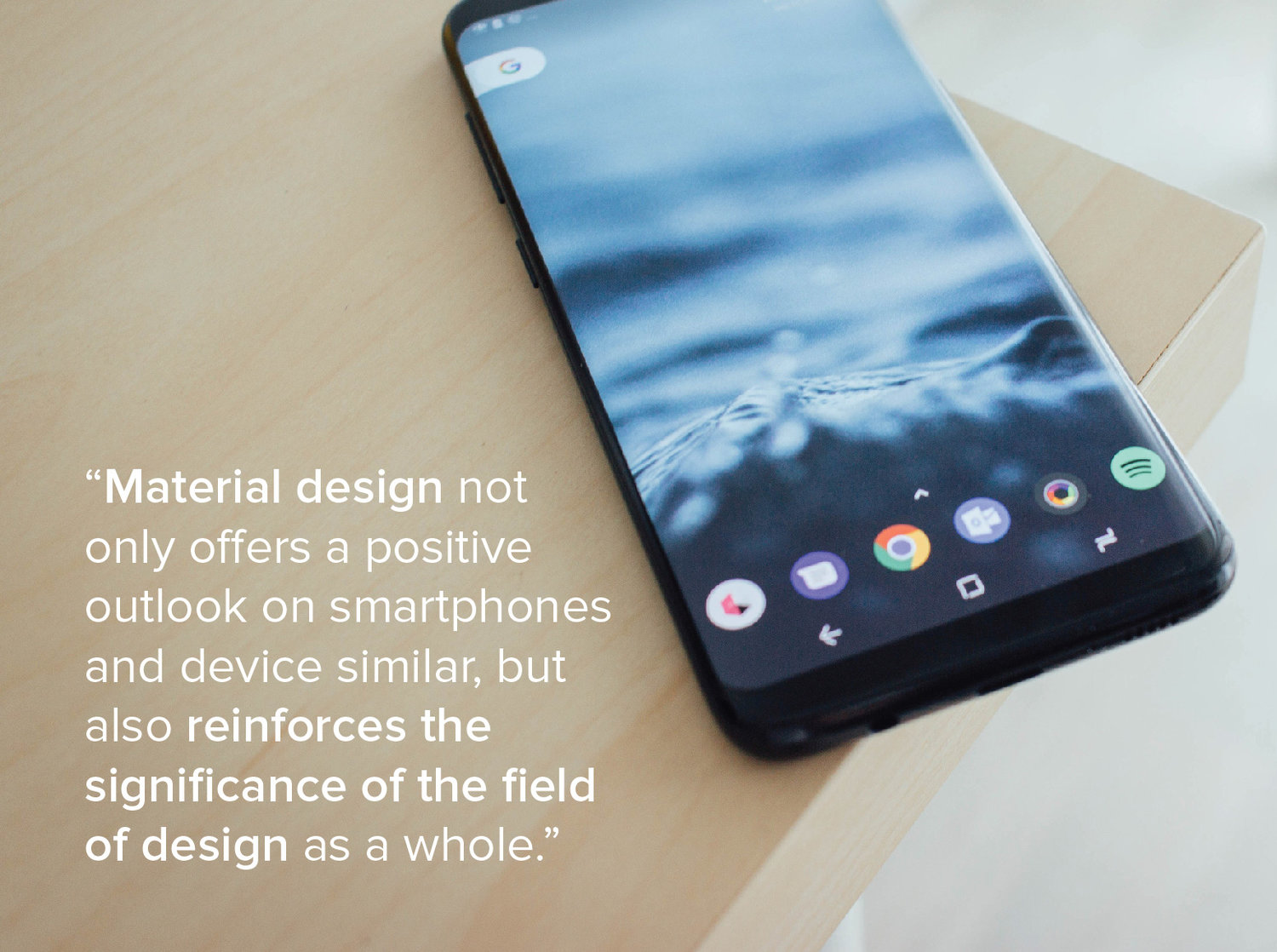What is material design?
“Material Design is a unified system that combines theory, resources, and tools for crafting digital experiences.” -Google.
Wait, what?
Breaking down the fields of design was once much more simple than it is today. Generally speaking, there were just a few simple areas, such as graphic design, interior design, and industrial design. Now there’s web, UX, UI, packaging, product, instructional, video game, information, marketing design… the list goes on.
A concept called material design has more recently been circling and it seems a little unclear as to what it actually is (nice to know I’m not the only one who thought it had something to do with fabrics). Thankfully, Google came to the rescue by releasing this whimsical, yet informational video explaining Material Design.
One particular line in the clip grabbed my attention. “[Material design is] a new perspective on what the human and device relationship can be”. The video goes on to explain that material design essentially focuses on the technology behind the interfaces of our smart phones (and other gadgets), ultimately bridging the gap between the designers creating these devices and the people actually using them.
Designers at Google focused their attention to questions like to resolve questions such as what materials our devices are made of, how surfaces work, and why they work the way they do, in an effort to improve that human and device relationship mentioned above. In their explorations, these ambitious creatives recognized that most users physically hold their smart devices similar to how they hold books, which led to the idea that various elements of the interface (buttons, sections of text, images, etc.) could be made to look more physical, like paper, rather than the overly digitized and tech-y. These observations resulted in the idea of “communicating surfaces” through our smart devices, which you can see in recent updates to many of Google’s apps like Gmail, Google Calendar, and Google Drive.
Rather than just being an interesting new perspective or “something to think about”, Google’s approach to material design could have meaningful effects on how our devices and the individuals creating them are perceived. The new era of innovation we find ourselves in continually gets a bad rep for being full of millennials glued to their phones lacking social skills, discipline, alertness, and so on. I see material design as a way to embrace technology, and consequently our devices, rather than rejecting them for their shortcomings.
This video also demonstrates the heavy thought and intention that goes into creating visuals, interactions, and other elements we see on our screens. Material designers carefully make choices and decisions in their work – which can be said for designers of all practices. In a way, this one particular niche can give credibility to the work of individuals in all fields of design, regardless of the discipline. There is reason and meaning behind what we do as designers, artists, and creatives. Material design not only offers a positive outlook on smartphones and device similar, but also reinforces the significance of the field of design as a whole.
If you’d like to read more about Material Design, here is a link to a handy guide also released by Google.


